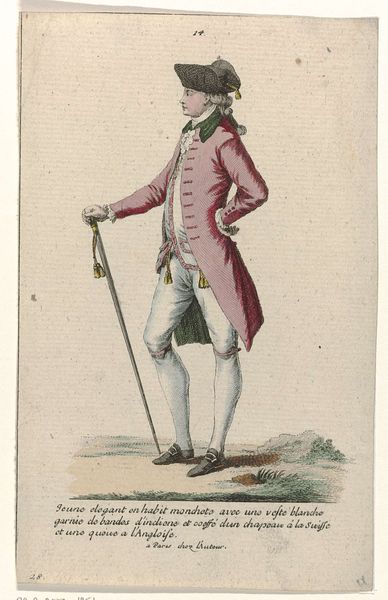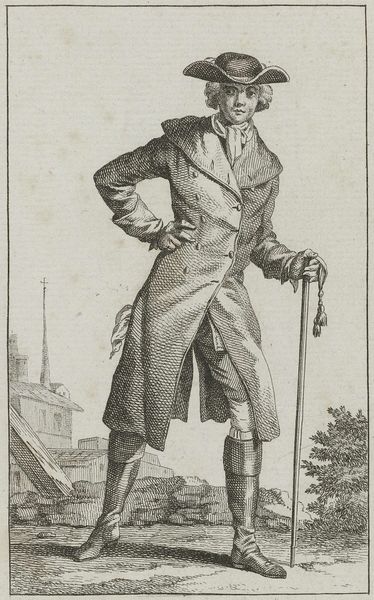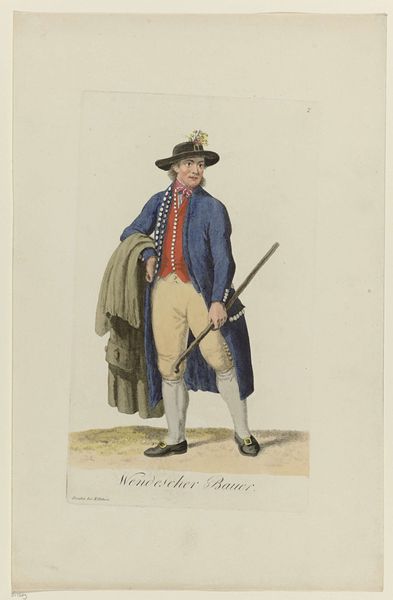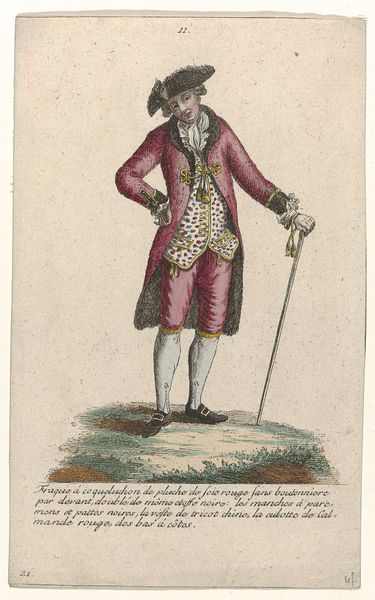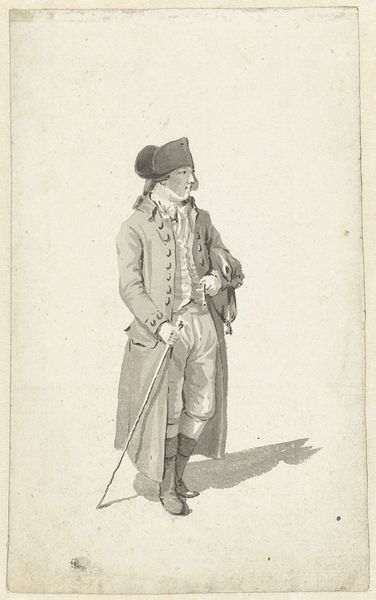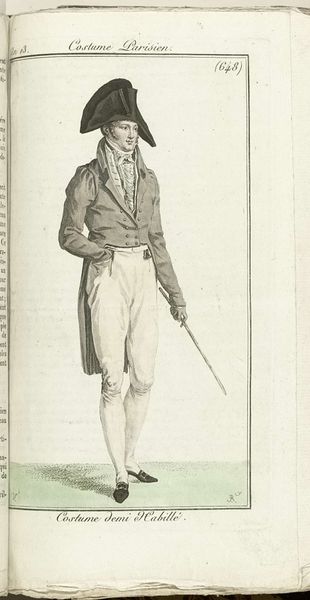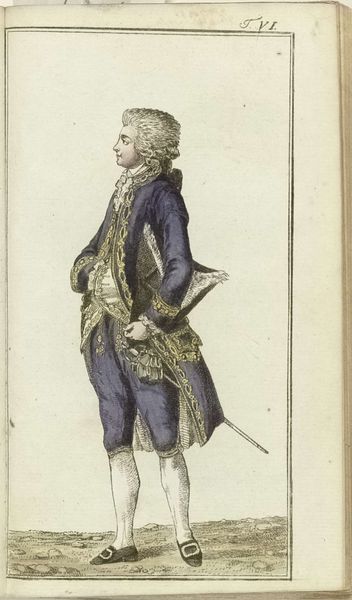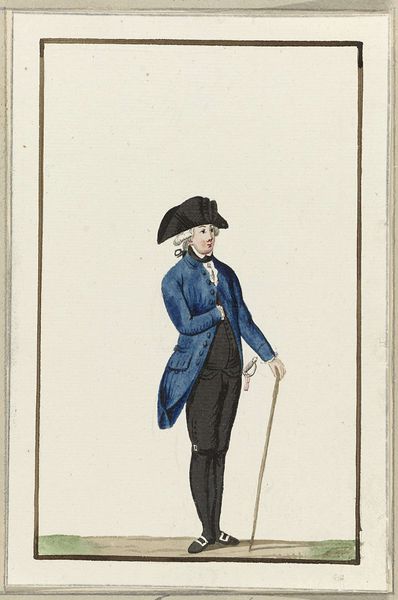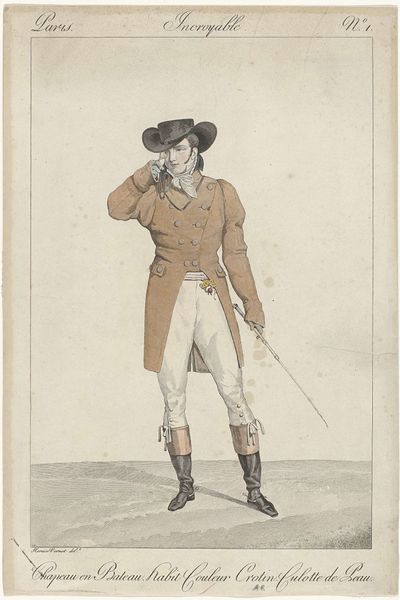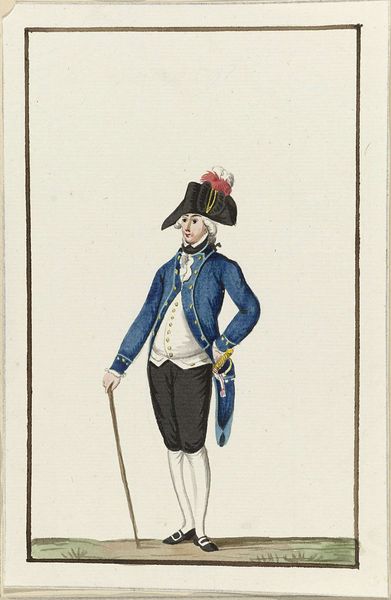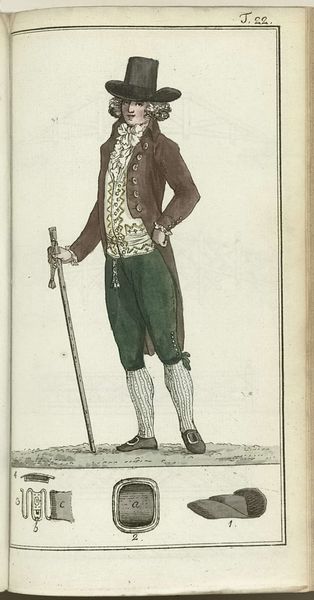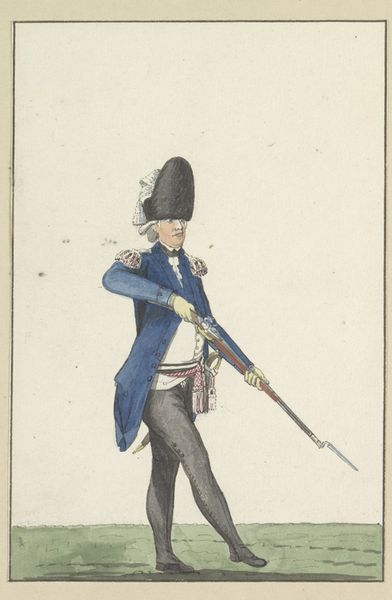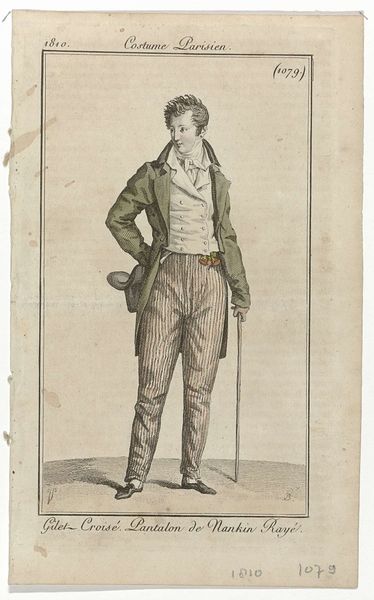
print, watercolor, ink
#
portrait
#
neoclassicism
# print
#
watercolor
#
ink
#
watercolour illustration
#
genre-painting
Copyright: Rijks Museum: Open Domain
Curator: Standing before us is an image from the "Journal des Luxus und der Moden," or Journal of Luxury and Fashion, from 1786. Specifically, this is Band I, Tafel or Plate 9. It is the work of Friedrich Justin Bertuch. Editor: My first impression is sheer austerity. The palette is restrained—almost drab—which creates a sense of quiet reflection, though the man’s attire still exudes the kind of opulence that marks the elite of the late 18th century. Curator: Bertuch's Journal was quite significant. It acted as a key disseminator of fashion and cultural trends throughout the German-speaking lands. Its influence can be observed by looking at how printmaking could distribute designs to tailors and those making personal attire; essentially shaping taste. Editor: Absolutely. And considering its target audience—the aristocracy and emerging bourgeoisie—the journal served not only as a style guide, but also as a tool for solidifying social hierarchies. Who could afford these fashions? Whose labor actually constructed them? That act of fashion itself became a political declaration of both status and available capital. Curator: What I find compelling are the printing methods themselves, which reveal so much about production capacities at the time. You've got ink, likely applied through etching or engraving, overlaid with watercolor washes—requiring collaborative workshops of labor divided among skilled artisans. Editor: This makes you think: whose hands prepared the paper, mixed pigments, operated printing presses, and finally applied watercolors? Also, in representing only a man, it also shows us gender roles prevalent during that time. Curator: Precisely. Moreover, understanding the materials enables us to discern which were localized versus imported, thereby implicating transatlantic commerce routes within aesthetic representation. Editor: The subject's somewhat languid pose combined with formal presentation really exposes complex issues relating to cultural identity within Europe in this time period—gender expectations of those considered citizens who could read and act on such images of luxury. He seems an interesting individual caught within webs of consumption, yet also defining ideals related to this. Curator: Looking at this carefully crafted and meticulously disseminated image, it’s clearer that fashion, art, and commerce in the late 18th century were intertwined in ways we’re still unraveling. The material realities are palpable—a direct conduit back in time. Editor: Yes, it goes far beyond mere aesthetics and begins speaking volumes on politics, social labor, personal identity and, I suppose, how material can be an extremely loaded signifier within these constructs.
Comments
No comments
Be the first to comment and join the conversation on the ultimate creative platform.
